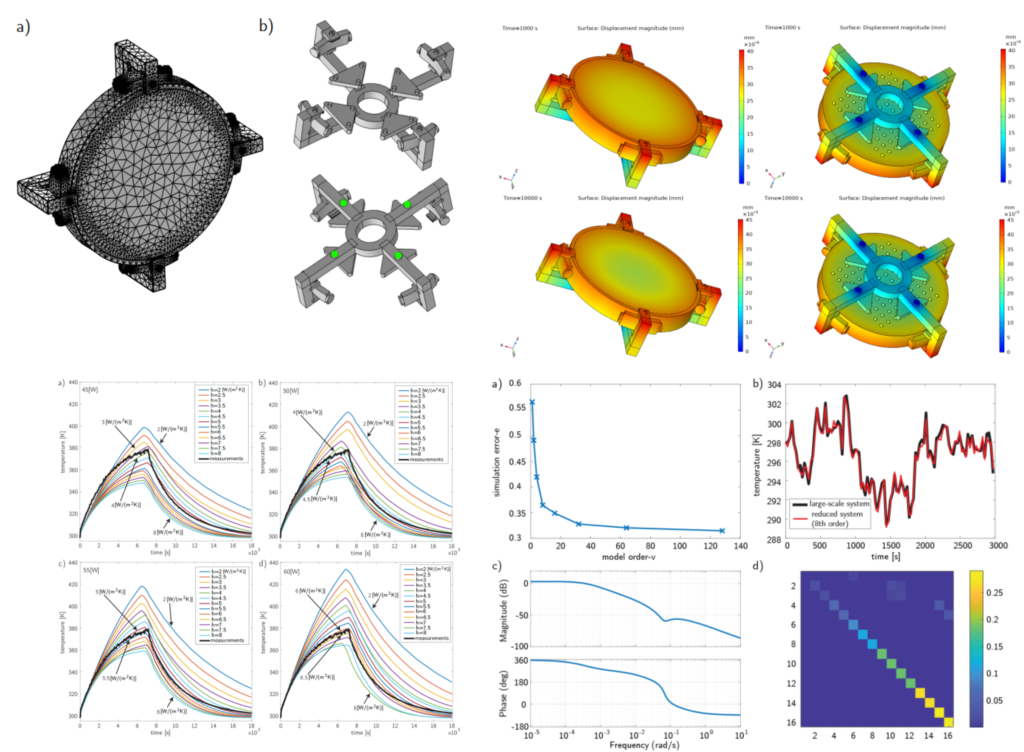
We have extensive knowledge and more than 15 years of experience in using COMSOL Multiphysics to model and simulate the most challenging multiphysics problems. Consequently, we can solve your most challenging multiphysics modeling problems. We can also help you to experimentally validate the models by combining COMSOL Multiphysics with experimental data.
- We have experience in coupling different multi-physics modules and models, such as structural mechanics, optics, heat transfer, ray tracing, electromagnetics, and rigid body dynamics.
- We have experience in modeling and simulating in COMSOL Multiphysics complex optics and opto-mechatronics models, such as Structural Thermal Optical Performance (STOP) Models. In the publications given below, we have used COMSOL Multiphysics to develop high-fidelity models of deformable mirrors and opto-mechatronics systems. We have experimentally validated the developed models.
- We have experience in combining COMSOL Multiphysics with MATLAB. We know how to use COMSOL LiveLink for the MATLAB module to completely automatize the modeling process and to develop complex models. We also know how to export state-space models from COMSOL to MATLAB. By exporting models from COMSOL to MATLAB, you can use COMSOL models to develop advanced model-based controllers and estimators.
- We know how to perform model-order reduction of COMSOL models such that they can be used for model-based estimation and control.
- We know how to model complex mechatronics systems in COMSOL. For example, we modeled large-scale deformable mirrors with hundreds of actuators that are used in adaptive optics systems.
Please contact us and describe your COMSOL modeling problem. We will do our best to give you the most competitive quote!
Haber, A., Draganov, J. E., Heesh, K., Cadena, J., & Krainak, M. (2021). Modeling, experimental validation, and model order reduction of mirror thermal dynamics. Optics Express, 29(15), 24508-24524.
Haber, A., Draganov, J. E., Heesh, K., Tesch, J., & Krainak, M. (2020). Modeling and system identification of transient STOP models of optical systems. Optics express, 28(26), 39250-39265.
Haber, A., Draganov, J. E., & Krainak, M. (2022, October). Subspace identification of low-dimensional Structural-Thermal-Optical-Performance (STOP) models of reflective optics. In Optical Modeling and Performance Predictions XII (Vol. 12215, pp. 39-54). SPIE.
Haber, A., Draganov, J. E., & Krainak, M. (2022, October). Machine learning of transient structural-thermal-optical-performance (STOP) models. In Applications of Machine Learning 2022 (Vol. 12227, pp. 46-56). SPIE.
Haber, A., & Verhaegen, M. (2020). Modeling and state-space identification of deformable mirrors. Optics Express, 28(4), 4726-4740.